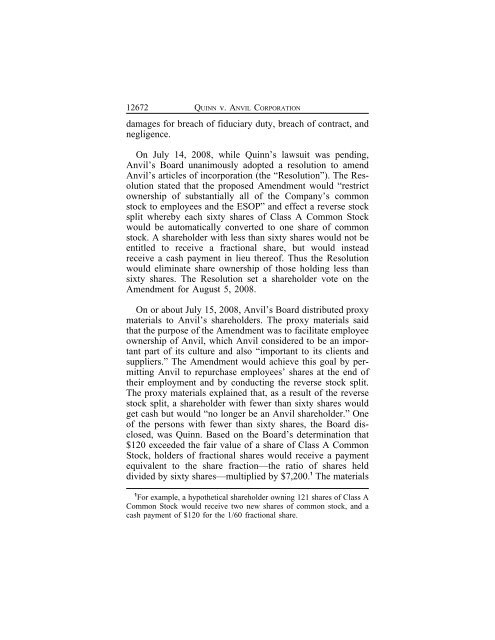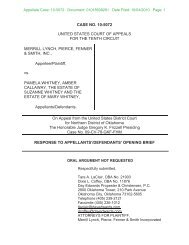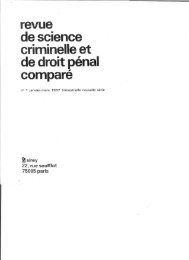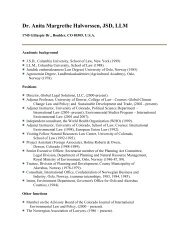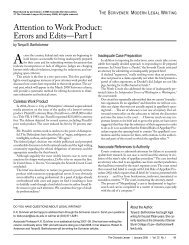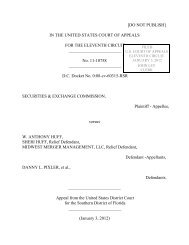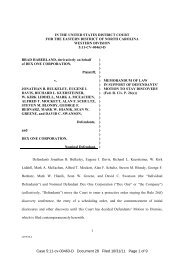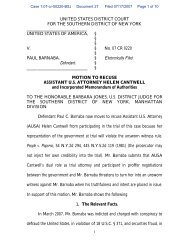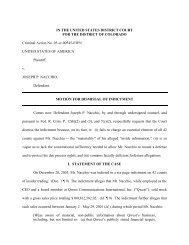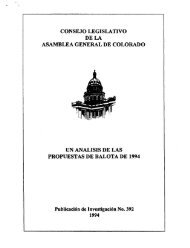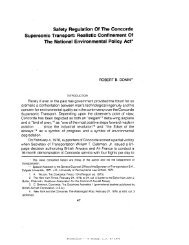Quinn v. Anvil Corp.
Quinn v. Anvil Corp.
Quinn v. Anvil Corp.
You also want an ePaper? Increase the reach of your titles
YUMPU automatically turns print PDFs into web optimized ePapers that Google loves.
12672 QUINN v. ANVIL CORPORATION<br />
damages for breach of fiduciary duty, breach of contract, and<br />
negligence.<br />
On July 14, 2008, while <strong>Quinn</strong>’s lawsuit was pending,<br />
<strong>Anvil</strong>’s Board unanimously adopted a resolution to amend<br />
<strong>Anvil</strong>’s articles of incorporation (the “Resolution”). The Resolution<br />
stated that the proposed Amendment would “restrict<br />
ownership of substantially all of the Company’s common<br />
stock to employees and the ESOP” and effect a reverse stock<br />
split whereby each sixty shares of Class A Common Stock<br />
would be automatically converted to one share of common<br />
stock. A shareholder with less than sixty shares would not be<br />
entitled to receive a fractional share, but would instead<br />
receive a cash payment in lieu thereof. Thus the Resolution<br />
would eliminate share ownership of those holding less than<br />
sixty shares. The Resolution set a shareholder vote on the<br />
Amendment for August 5, 2008.<br />
On or about July 15, 2008, <strong>Anvil</strong>’s Board distributed proxy<br />
materials to <strong>Anvil</strong>’s shareholders. The proxy materials said<br />
that the purpose of the Amendment was to facilitate employee<br />
ownership of <strong>Anvil</strong>, which <strong>Anvil</strong> considered to be an important<br />
part of its culture and also “important to its clients and<br />
suppliers.” The Amendment would achieve this goal by permitting<br />
<strong>Anvil</strong> to repurchase employees’ shares at the end of<br />
their employment and by conducting the reverse stock split.<br />
The proxy materials explained that, as a result of the reverse<br />
stock split, a shareholder with fewer than sixty shares would<br />
get cash but would “no longer be an <strong>Anvil</strong> shareholder.” One<br />
of the persons with fewer than sixty shares, the Board disclosed,<br />
was <strong>Quinn</strong>. Based on the Board’s determination that<br />
$120 exceeded the fair value of a share of Class A Common<br />
Stock, holders of fractional shares would receive a payment<br />
equivalent to the share fraction—the ratio of shares held<br />
divided by sixty shares—multiplied by $7,200. 1 The materials<br />
1 For example, a hypothetical shareholder owning 121 shares of Class A<br />
Common Stock would receive two new shares of common stock, and a<br />
cash payment of $120 for the 1/60 fractional share.


